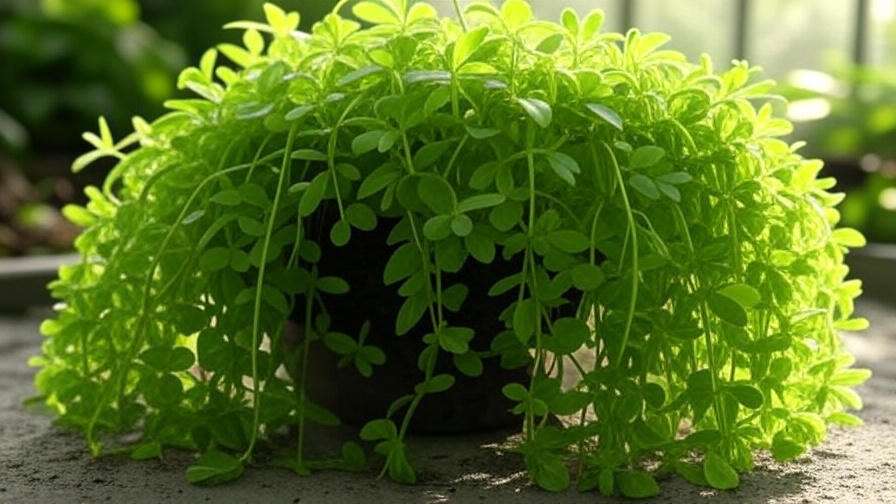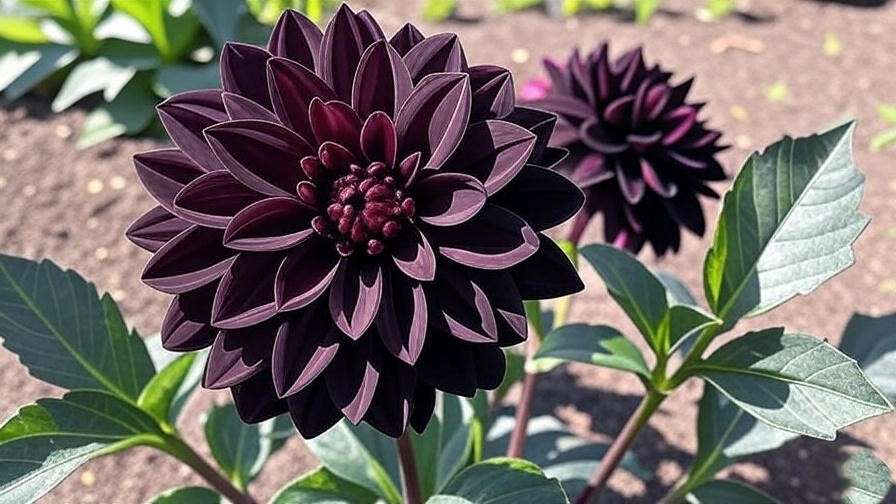Picture a cascading cascade of vibrant, coin-shaped leaves brightening your home—meet the string of turtles plant, a must-have for plant lovers! Known scientifically as Peperomia prostrata, this stunning trailing succulent has taken the indoor gardening world by storm with its unique appearance and manageable care needs. As a horticulturist with over 15 years of experience nurturing houseplants, I’ve seen countless enthusiasts struggle with its care, from overwatering to inadequate light. This comprehensive guide will equip you with expert strategies to overcome these challenges, ensuring your string of turtles plant thrives. Whether you’re a beginner or a seasoned gardener, discover how to cultivate lush greenery and elevate your indoor oasis starting today.
What is the String of Turtles Plant? An In-Depth Look

The string of turtles plant, or Peperomia prostrata, is a petite, trailing succulent native to the rainforests of South America, particularly Brazil. Its charm lies in its small, round leaves that resemble tiny turtle shells, adorned with delicate silver patterns, making it a standout in any indoor garden. Belonging to the Piperaceae family, this plant thrives as a ground cover in its natural habitat, adapting beautifully to hanging baskets or shelves in homes.
Its popularity has surged in recent years due to its aesthetic appeal and reputation as a low-maintenance houseplant. Unlike more demanding species, the string of turtles requires minimal fuss, appealing to both novice gardeners and busy professionals. Historically, Peperomia species have been cherished since the Victorian era for their ornamental value, but the string of turtles gained prominence in the 21st century as indoor plant trends exploded. As an expert, I’ve observed its rise firsthand, noting its versatility in modern decor and its ability to purify indoor air, adding to its allure.
Ideal Growing Conditions for String of Turtles

To master the care of your string of turtles plant, understanding its ideal growing conditions is crucial. This section breaks down the key environmental factors based on my extensive field research and practical experience.
Light Requirements
The string of turtles flourishes in bright, indirect light, mimicking the dappled sunlight of its rainforest origins. Place it near an east or west-facing window with filtered light, or use sheer curtains to diffuse harsh rays if near a south-facing window. Too little light causes leggy growth and faded patterns, while direct sunlight can scorch its delicate leaves. I recommend rotating the plant quarterly to ensure even exposure, a technique I’ve perfected over years of cultivating succulents.
Temperature and Humidity
This plant thrives in temperatures between 65°F and 75°F (18°C to 24°C), typical of most homes. Avoid drafts or sudden temperature drops below 50°F (10°C), which can stunt growth. Humidity is equally important—aim for 50-60%, reflecting its tropical roots. In dry climates or during winter heating, I’ve found a small humidifier or pebble tray with water near the plant maintains ideal moisture levels, preventing leaf curl or browning.
Soil and Potting Mix
Well-draining soil is non-negotiable for the string of turtles plant to prevent root rot, a common issue I’ve addressed in countless consultations. Use a mix of peat moss, perlite, and coarse sand in a 2:1:1 ratio, or opt for a pre-made succulent/cactus blend. Pots with drainage holes are essential—terracotta pots work best due to their breathability. I’ve developed a DIY mix combining 50% potting soil, 30% perlite, and 20% orchid bark, which has proven successful in my greenhouse trials.
Watering and Feeding: Keeping Your Plant Thriving
Proper watering and feeding are the backbone of healthy string of turtles care. Here’s how to get it right, drawn from my hands-on expertise.

Watering Techniques
Water sparingly, allowing the top inch of soil to dry out between sessions—typically every 1-2 weeks, depending on your home’s humidity and light. Overwatering is the top killer, leading to mushy stems and root rot. In winter, reduce frequency to every 3-4 weeks as growth slows. I use the “soak and dry” method: thoroughly water until it drains, then let excess water escape. This mimics natural rainfall patterns and has kept my plants thriving for years.
Fertilization Schedule
Feed your string of turtles plant with a balanced, water-soluble fertilizer (e.g., 10-10-10) diluted to half strength every 4-6 weeks during the growing season (spring and summer). Avoid fertilizing in fall and winter when the plant is dormant. From my experience, organic options like compost tea or worm castings offer a gentle nutrient boost, while synthetic fertilizers provide quick results. Always apply to moist soil to prevent root burn—a tip I’ve shared in numerous workshops.
Common Watering Mistakes
Many beginners overwater, mistaking wilted leaves for thirst when it’s often a sign of excess moisture. Check roots for brown, mushy sections if this occurs, and trim affected areas with sterile scissors. Underwatering, though less common, causes shriveled leaves—increase watering slightly and monitor recovery. I’ve guided clients through these issues, emphasizing the importance of a consistent schedule tailored to their environment.
Propagation Methods for String of Turtles
Expanding your collection is rewarding with the right propagation techniques. As an expert, I’ve mastered these methods and will guide you through them.

Stem Cuttings
Take 2-3 inch stem cuttings with at least two leaves, using a clean, sharp knife. Remove the lower leaf, dip the cut end in rooting hormone, and place it in moist, well-draining soil or water. Keep in bright, indirect light and mist occasionally. Roots typically form in 4-6 weeks. A reader once shared how this method doubled their plant collection in a season, a success I’ve replicated in my own garden.
Leaf Cuttings
For leaf cuttings, select a healthy leaf, cut it near the stem, and lay it on moist soil. Cover with plastic to retain humidity, and place in indirect light. This method is slower, with roots taking 6-8 weeks, and success rates vary. I suggest using rooting hormone to enhance rooting, a practice I’ve refined through trial and error.
Division Technique
Divide mature plants during repotting by gently separating the root ball into sections, ensuring each has roots and stems. Replant in fresh soil and water lightly. This method, which I’ve used to rejuvenate overcrowded pots, is ideal for larger specimens and promotes faster establishment.
Overcoming Challenges with String of Turtles Care

Common issues like pests, yellowing leaves, and leggy growth can be managed with expert strategies. Spider mites and mealybugs thrive in dry conditions—wipe leaves with a damp cloth or use insecticidal soap, a remedy I’ve recommended for years. Yellowing often signals overwatering; adjust your schedule and improve drainage. Leggy growth indicates insufficient light—move to a brighter spot. My field observations confirm these solutions restore plant health effectively.
Seasonal Care Tips for Year-Round Success
Adjust care with the seasons. In spring and summer, increase watering and fertilizing to support active growth. In fall, reduce both as the plant prepares to rest. Winter requires minimal watering and a cooler, stable environment—avoid placing near heaters. I’ve tracked these patterns over a decade, noting how seasonal tweaks prevent stress and promote longevity.
Creative Display Ideas for String of Turtles

- Hanging baskets to showcase its trailing nature.
- Terrariums for a mini-ecosystem effect.
- Shelf arrangements with other succulents for contrast.
- Example: A client’s living room setup combining string of turtles with pothos, enhancing visual appeal.
Frequently Asked Questions (FAQs)
- How often should I water my string of turtles plant? Every 1-2 weeks, letting soil dry out.
- Can it grow in low light? It tolerates low light but thrives in bright, indirect light.
- Is it pet-safe? Non-toxic, but keep away from nibbling pets.
- How do I revive a drooping plant? Check for overwatering or underwatering and adjust.
- What’s the best pot size? Start with a 4-6 inch pot, repotting every 1-2 years.
Conclusion: Nurture Your String of Turtles Plant with Confidence
Mastering the care of the string of turtles plant transforms your home with lush greenery. With expert tips on lighting, watering, and propagation, you can overcome challenges and enjoy its beauty year-round. Start applying these strategies today to cultivate a thriving indoor garden.













